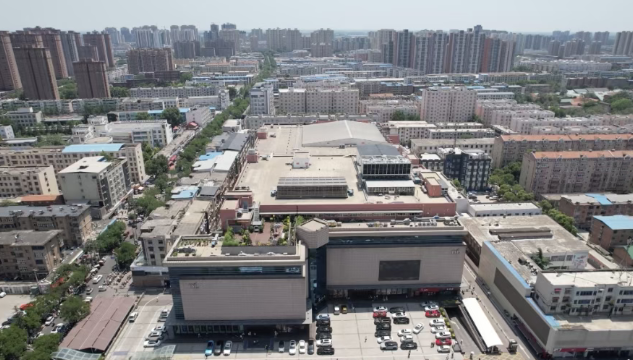NIMBY, an acronym for “Not In My Backyard”, refers to the phenomenon where residents oppose developments that are perceived to benefit the public good but are located close to their own homes. The idea of a smart and sustainable city inevitably brings up the need for civic deliberation. While urban initiatives often enjoy broad public support in principle, that support can quickly fade when changes begin to affect people’s everyday lives. In such cases, individuals may resist projects by invoking NIMBY sentiments. This opposition presents a serious challenge for city officials and urban planners. Citizen complaints can influence political behavior and steer the direction of urban development. As a result, NIMBYism holds considerable power in city politics, especially when it stands in the way of implementing socially beneficial projects.
Local Resistance to Public Projects
Take homelessness, for example. Many cities face this issue and need to build new shelters. While some people recognize the social value of these shelters, others who live near the proposed locations often push back. They prefer to move these facilities away from their neighborhoods. In response, they hire lawyers, organize community meetings, and attract media attention. This form of resistance can block or delay necessary developments and ultimately weaken efforts to tackle homelessness.
NIMBY in Action: Global Examples
Several well-known examples show how NIMBYism plays out in real life. In 2012, residents of Nova Scotia, Canada, came together to oppose legislation that allowed wind turbines to be built close to their communities. Similar objections have appeared in other countries as well.
In Australia, for instance, Manly Beach offers excellent conditions for coastal wind farms. However, many locals have opposed the construction for years. Former Prime Minister Tony Abbott even described wind turbines as “dark Satanic mills.” Residents, backed by politicians and media outlets, argue that wind farms would ruin the scenic coastal view and harm the natural environment. This local resistance continues to stall the project.
Is it good or bad for the city’s life?
Deliberation is a crucial value in society, as it helps ensure that decisions about public goods are well-grounded. Opposing viewpoints should be heard and debated, as different opinions can lead to better outcomes. Asking the right questions leads to smart solutions, and opposition serves as an important check on the process. This explains why NIMBY can be an instrument for smart governance, as it ensures that the interests of local groups are integrated into the decision-making process.
On the other hand, NIMBY may play a destructive role in implementing some initiatives. The NIMBY phenomenon certainly complicates the decision-making process and the realization of any project related to public goods. This delay requires more time, financial resources, and other resources than originally intended. Moreover, the NIMBY movement can arise at any stage of a project’s implementation, catching the authorities by surprise.
Origins of the NIMBY Syndrome
The term NIMBY is often used to emphasize the negative role of emotional, irrational, uninformed citizens in urban politics. It is often argued that these citizens support the status quo—they have privileges and do not want to part with them. Is this the case? Researchers who began exploring this phenomenon several years ago have identified some characteristics:
Information: Limited information about a project may lead to frustration among citizens and stimulate the start of the NIMBY movement. Timely and honest information about the potential risks of a project and its benefits for local residents can be an effective mechanism for preventing NIMBY.
Trust: There are many causes of NIMBY, but the common factor is distrust of authorities, neighbors, and municipalities. Trust is the lifeblood of any political system. In the implementation of projects related to public goods, trust plays a key role. It is not only about trusting the authorities but also the sponsors of a particular project. The absence of this key component leads to the expansion of the movement.
Emotions: Distrust and lack of information give rise to fear. First and foremost, it is the fear of negative consequences, which becomes an attractive target for manipulation. Often, emotions that influence the decision-making process allow for the insertion of simplified, demagogic models, contrasting good rational projects with emotional, irrational citizens as the opposition.

Sometimes, the emergence of the syndrome is linked to the characteristics of political culture, particularly patriarchal, traditional, conservative values that resist any form of innovation. More specifically, the inability to adopt a broader perspective on the issue, coupled with a narrow and localized approach, contributes to the development of the syndrome. However, this is a contentious value judgment that does not help in understanding the true nature of the phenomenon.
Consequences
In the realm of information battles, NIMBY often becomes a powerful tool for shaping decision-making in urban politics. Politicians and interest groups sometimes use the label strategically to discredit opponents. When someone calls a resident a NIMBY, they frame that person as selfish, irrational, and partisan—as someone who stands in the way of delivering essential public goods. This tactic can shut down meaningful debate and ignore the complexity of local concerns.
But reducing NIMBY to a problem that city leaders must eliminate misses the point. People do not always respond with pure logic or suppress their emotions when faced with change. Instead of dismissing opposition, technocrats and experts need to explain their plans clearly and engage the public in open dialogue. They must build trust and show both the risks and benefits of new projects. That’s how democracy works: not by removing conflict, but by embracing it as part of a deeper conversation about public values and priorities.


